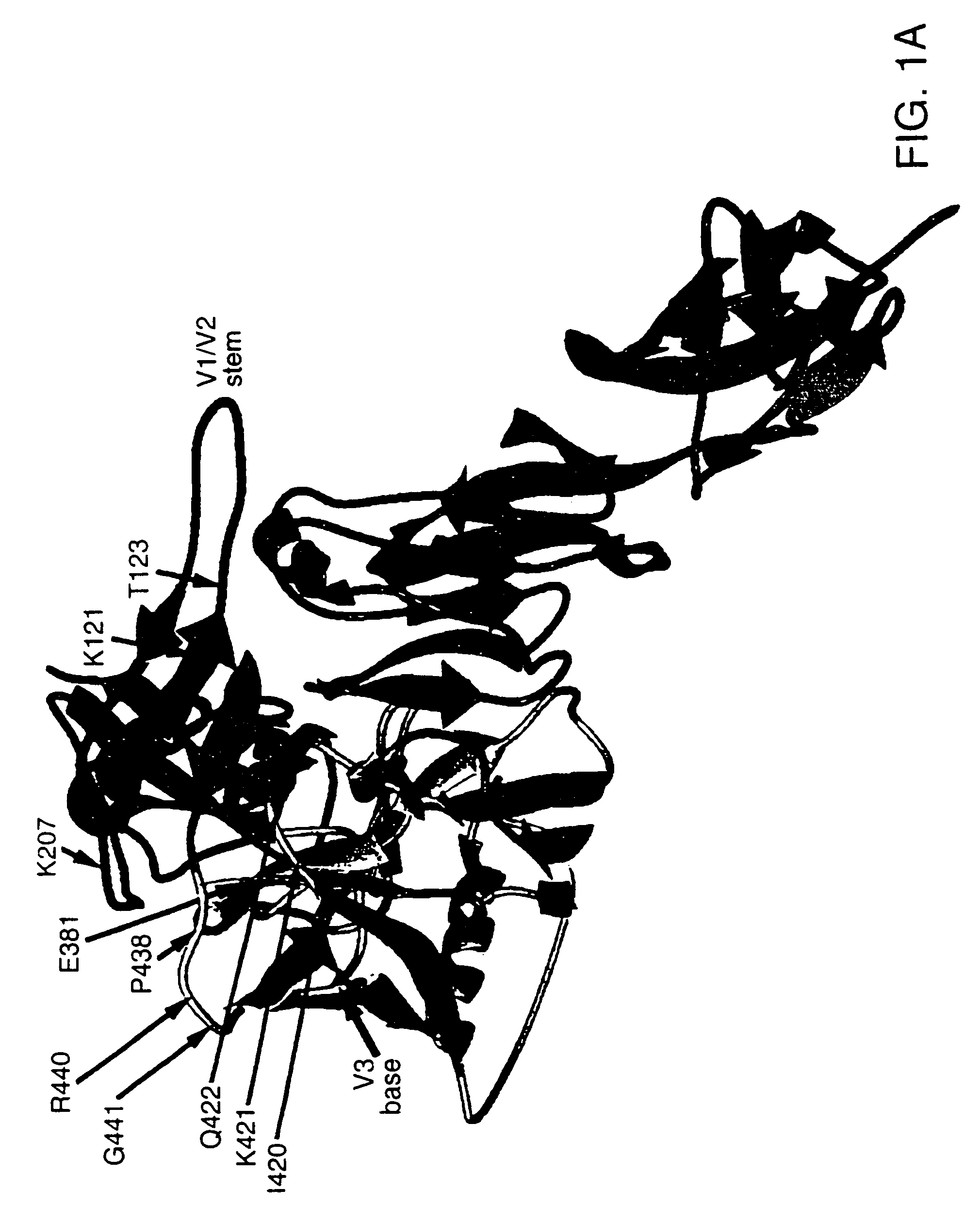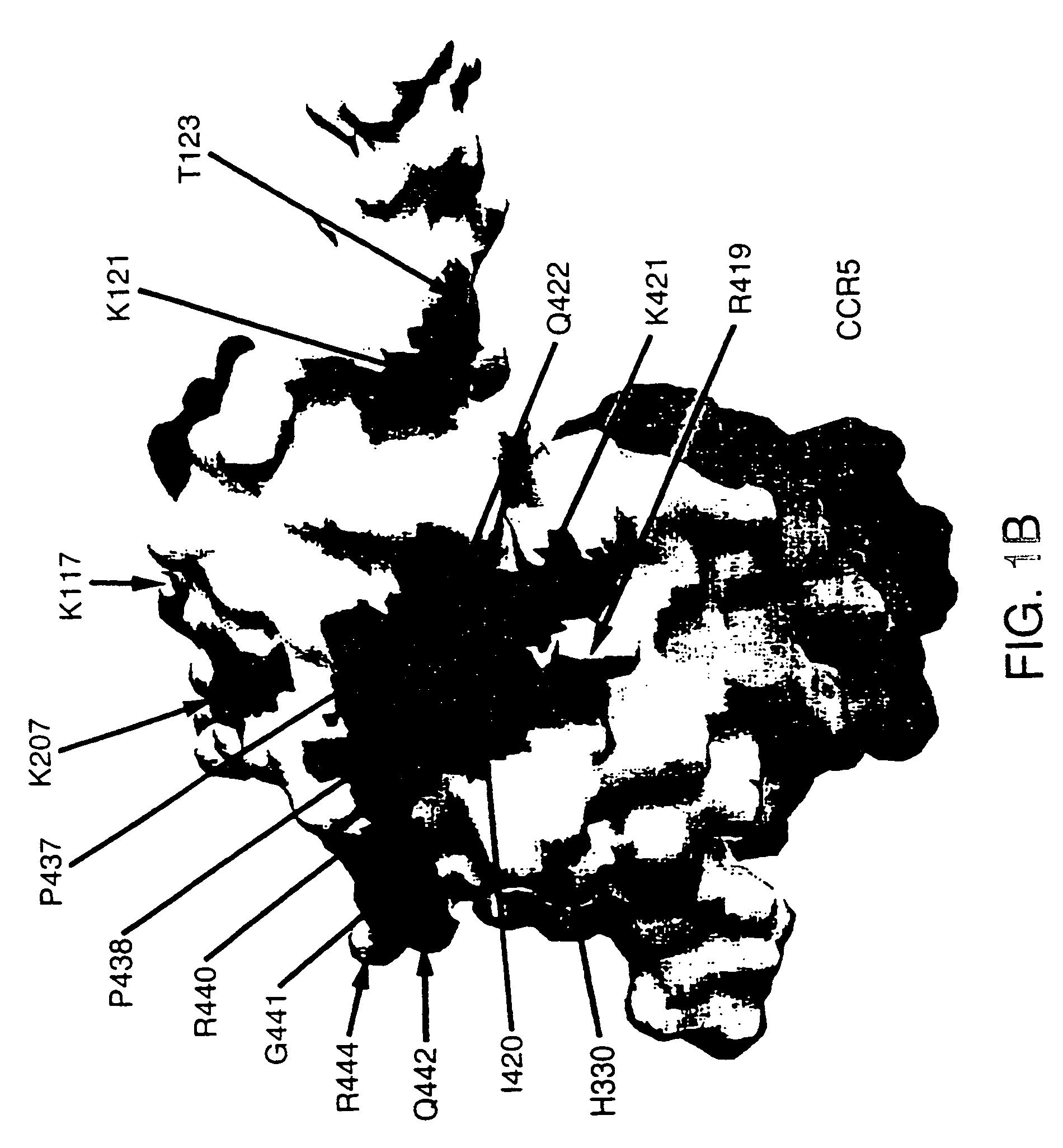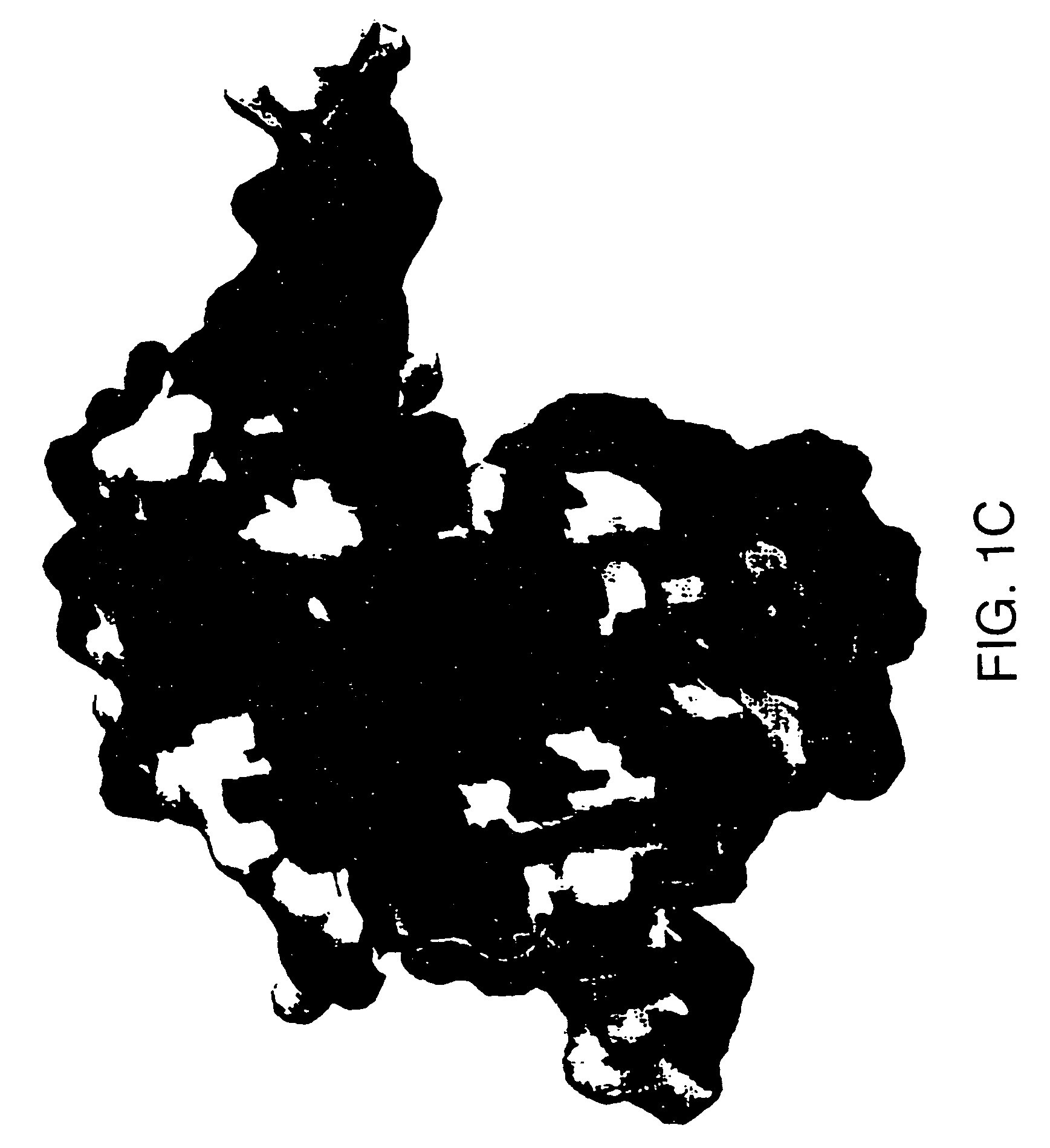Stabilized primate lentivirus envelope glycoproteins
a lentivirus and glycoprotein technology, applied in the field of envelope polypeptides, can solve the problems of reducing the number of cd4-positive lymphocytes, compromising the immune response, and the approach has not yet been successful, so as to reduce the flexibility of the interdomain and increase the hydrophobicity
- Summary
- Abstract
- Description
- Claims
- Application Information
AI Technical Summary
Benefits of technology
Problems solved by technology
Method used
Image
Examples
Embodiment Construction
[0042]We have discovered a series of novel polypeptides that can (1) enhance the immunogenicity of primate lentivirus envelope proteins for certain conserved epitopes, (2) generate a greater range of antibodies against “masked” gp120 structures and / or (3) stabilize the three-dimensional structure of the molecule.
[0043]We have discovered regions where disulfide bonds can be inserted which will stabilize the conformation of the molecule in a conformation approximating the native envelope glycoprotein conformation. We have discovered conserved regions and epitopes that are critical for CD4 and chemokine receptor binding. We have discovered critical turn structures of the molecules as well as internal cavities that decrease the immunogenicity of epitopes that would raise antibodies that could block CD4 binding and / or chemokine binding.
[0044]Preferably, the envelope protein is selected from the group consisting of HIV or SIV. More preferably, it is HIV. Still more preferably, it is HIV-1...
PUM
| Property | Measurement | Unit |
|---|---|---|
| hydrophobic | aaaaa | aaaaa |
| 3-dimensional structure | aaaaa | aaaaa |
| stability | aaaaa | aaaaa |
Abstract
Description
Claims
Application Information
 Login to View More
Login to View More - R&D
- Intellectual Property
- Life Sciences
- Materials
- Tech Scout
- Unparalleled Data Quality
- Higher Quality Content
- 60% Fewer Hallucinations
Browse by: Latest US Patents, China's latest patents, Technical Efficacy Thesaurus, Application Domain, Technology Topic, Popular Technical Reports.
© 2025 PatSnap. All rights reserved.Legal|Privacy policy|Modern Slavery Act Transparency Statement|Sitemap|About US| Contact US: help@patsnap.com



